Solgaard Lifepack Endeavor (with closet) Review
The ability to use Solgaard's Lifepack Endeavor as a daypack while its closet module stays in your hotel room is a solid idea, yet its execution feels clunky.
Our Verdict
Save time. Get access to brief summaries of our reviews so you can browse and make decisions more efficiently.
Pros
- Keeps its structure even when empty
- Plenty of built-in secondary pockets in and around the bag
- Roomy main compartment, especially expanded to its 37-liter capacity
Cons
- Sternum strap’s height and width adjustment is very limited
- Relatively hefty for its size
- Horseshoe-style opening can make loading gear difficult
Technical Details
-
Capacity
27l
35 liters when expanded
-
Weight (lb)
3.55 lb (1.6 kg)
-
Dimensions
12 in x 19 in x 8.25 in (30.5 x 48.3 x 21 cm)
large (depth is 12.5 in expanded) | 11 in x 17.25 in x 7.5 in - medium (depth is 12 in expanded)
-
Notable Materials
rPET (recycled polyethylene terephthalate), Unbranded Zippers, Unbranded Hardware
-
Manufacturing Country
China
-
Laptop Compartment Size
16"
-
Warranty Information
Full Review
All-in-one travel kits are compelling options for those who just want the complete package without worrying about which pouch works best with what backpack. For example, there’s the Gravel Backpack Travel System, which includes a travel backpack, a daypack, and even a sling. Then there are bags like the Tropicfeel Shell Travel Backpack, which features an integrated wardrobe and external modules you can swap out.
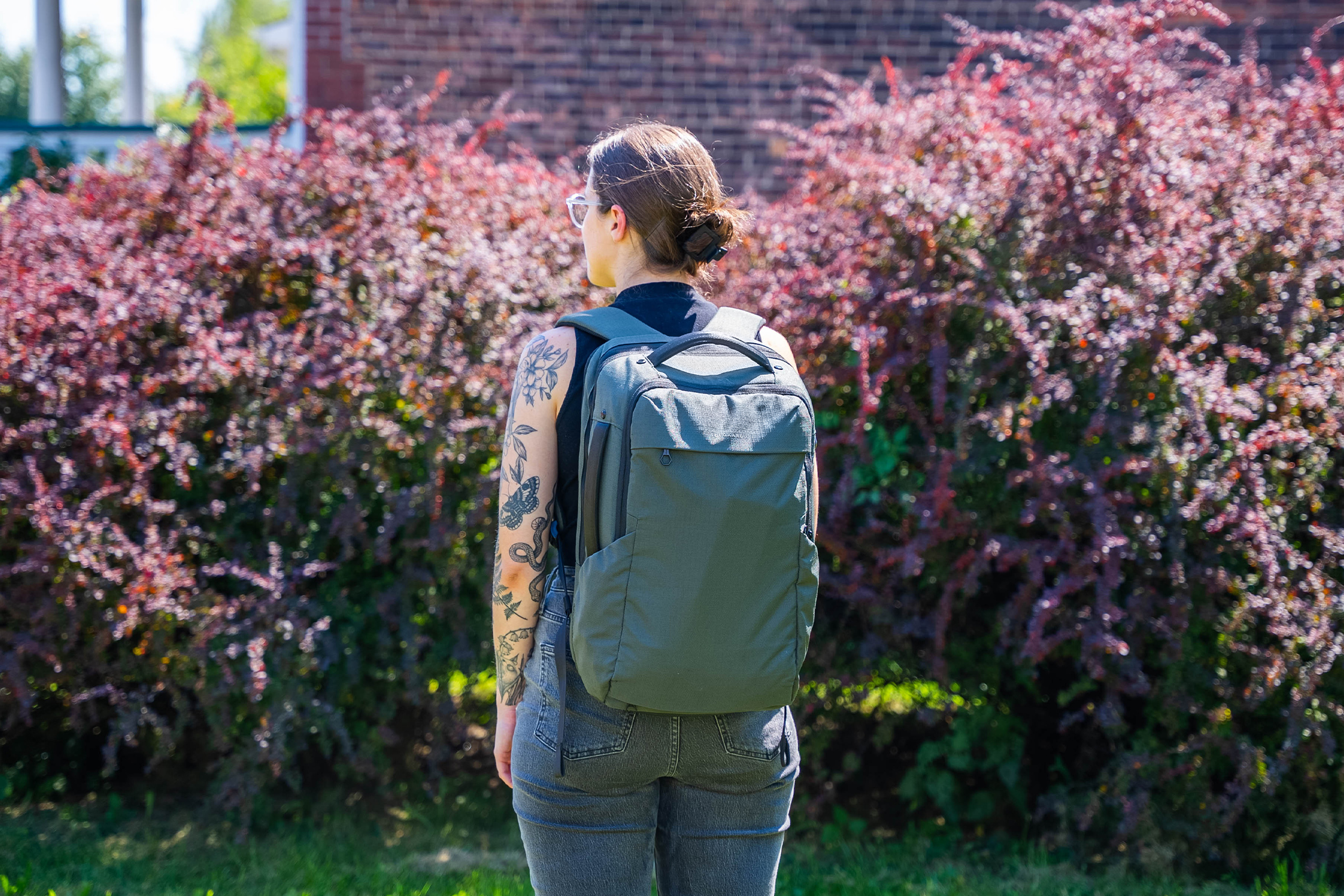
The bag we’re looking at in this review is the Solgaard Lifepack Endeavor. Between the two examples we mentioned earlier, the Lifepack Endeavor is much closer to the latter since it also features its own wardrobe system, though it’s called a closet in this case. That said, the Lifepack Endeavor has notable flaws in that the backpack itself that might just undermine its flashier features.
So, without further ado, let’s get on with the review.
External Components
The Lifepack Endeavor’s main fabric is called Shore-Tex, and the key characteristic here is its entirely recycled nature. To make a long story short, it’s recycled plastic that has been broken down and woven into fabric used in both the liner and shell of Solgaard’s gear. That’s a huge plus for anyone trying their best to be eco-friendly. In terms of durability, though our sample hasn’t had any blemishes, the fabric’s consistency is close to that of a ripstop material.

The fabric’s grid pattern suggests as much. For those not in the loop, ripstop fabric is a lightweight fabric with a grid pattern that acts as its reinforcement. The idea is that the grid reinforcement deters any rips in the fabric. So, while the rest of the fabric is thin and light, you only need that grid reinforcement in case anything tears. This type of fabric is mostly used for bags that need to be compressed as small as possible when not in use (think packable backpacks, totes, slings, etc.). It’s a strange choice for a travel backpack, but it works for the most part.
The base of the Lifepack Endeavor has a thicker type of fabric, most probably ballistic nylon. We wish Solgaard used this fabric more liberally throughout the base of the bag for better long-term durability. But hey, at the very least, the Lifepack Endeavor has a part of its base covered.

Being a large backpack, the Lifepack Endeavor features two fairly beefy handles, one at the top and one on the left side. Though thick, they’re relatively low-profile, so they stay out of the way and don’t ruin the bag’s otherwise clean profile. Using them is a very comfortable experience, and our only concern is that the side handle can get obscured by a water bottle (or other gear) in the pocket just below it.
On that note, there are travel water bottle pockets on each side of the bag. We dig how Solgaard kept the pockets’ design fairly simple. It’s mostly just fabric with a gusset at the back and a piece of elastic at the top for stretchiness. It’s simple yet effective for both slender bottles like a 21-ounce Hydro Flask or a thick 32-ounce Nalgene. Even better, both pockets have nearby attachment points. The left has the handle we mentioned previously, while the right one has a funky-looking D-ring above it. Both work to secure a bottle’s handle (if it has one) to make sure it doesn’t slip out if the bag’s tipped over.
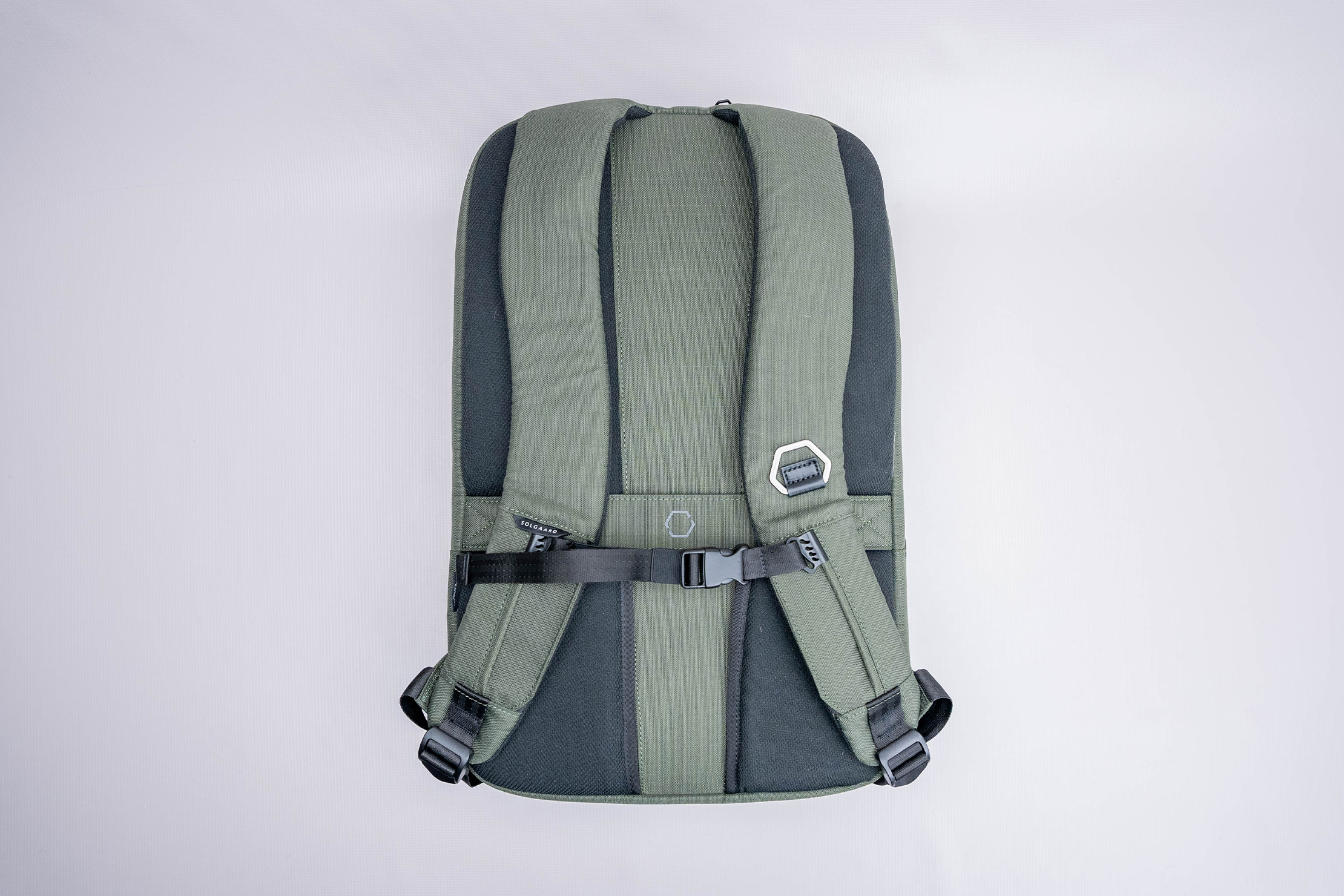
So, what kind of harness system does Solgaard use for this travel backpack? Like the water bottle pockets, they’ve opted for a simple setup that, on paper at least, nails the basics like thickly padded shoulder straps and a sliding sternum strap. Honestly, if a brand can dial in just those two components, that’s usually enough for us.
Unfortunately, the shoulder straps feel too soft and flexible despite the thick appearance. There’s almost no beefiness to them whatsoever, in stark contrast to the foam padding of the back panel, which we could really feel cushioning the back when we’re wearing it.
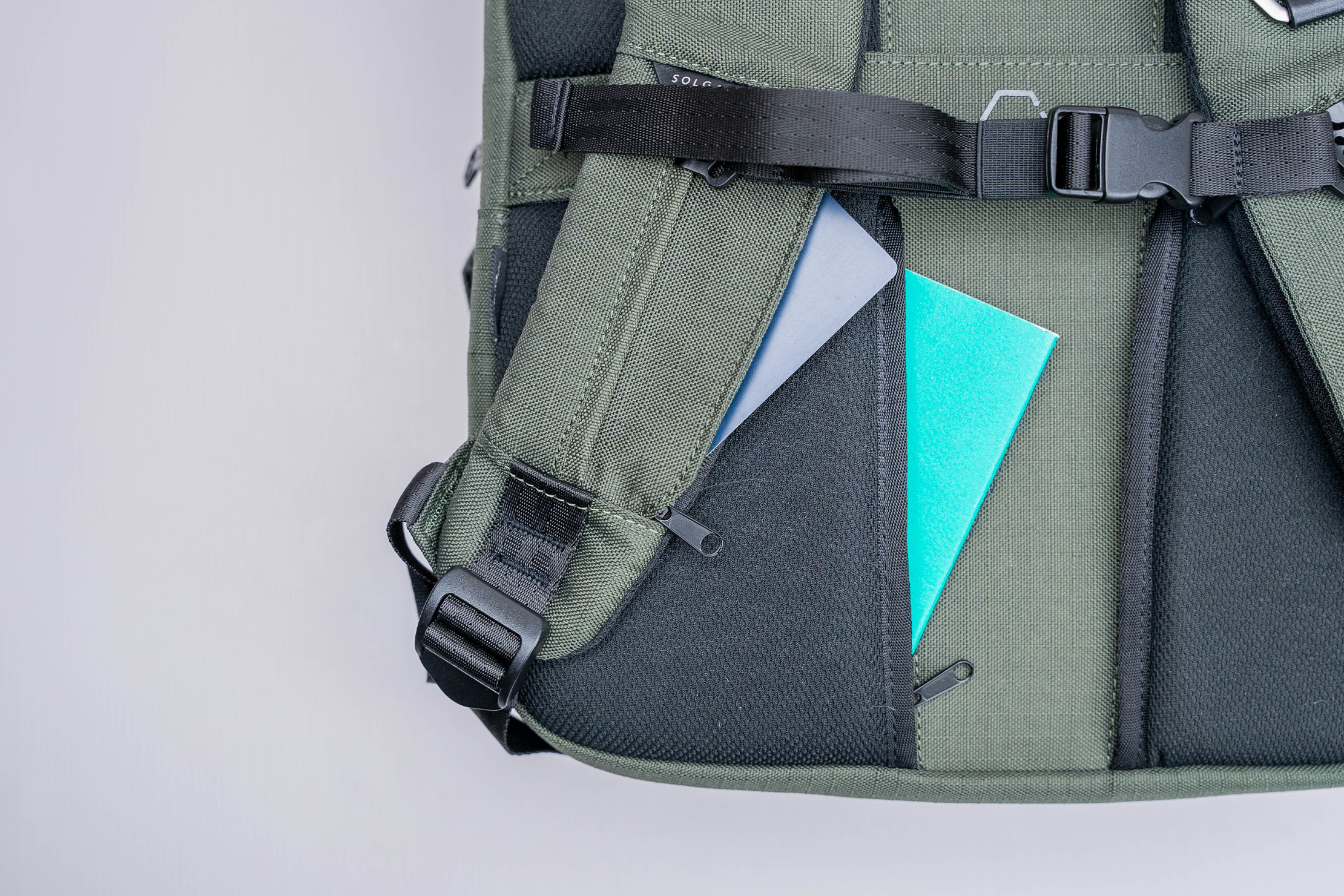
Then there are the extras Solgaard deems necessary. First is the luggage pass-through, which also doubles as a stowaway strap that holds both shoulder straps in place when you want to carry the bag by the side handle like a duffle. Second are the strap keepers. Yep! There are no dangly straps here, which means we’re at least 90% less likely to snag an expensive antique vase off its pedestal and break it (disclaimer: your results may vary).
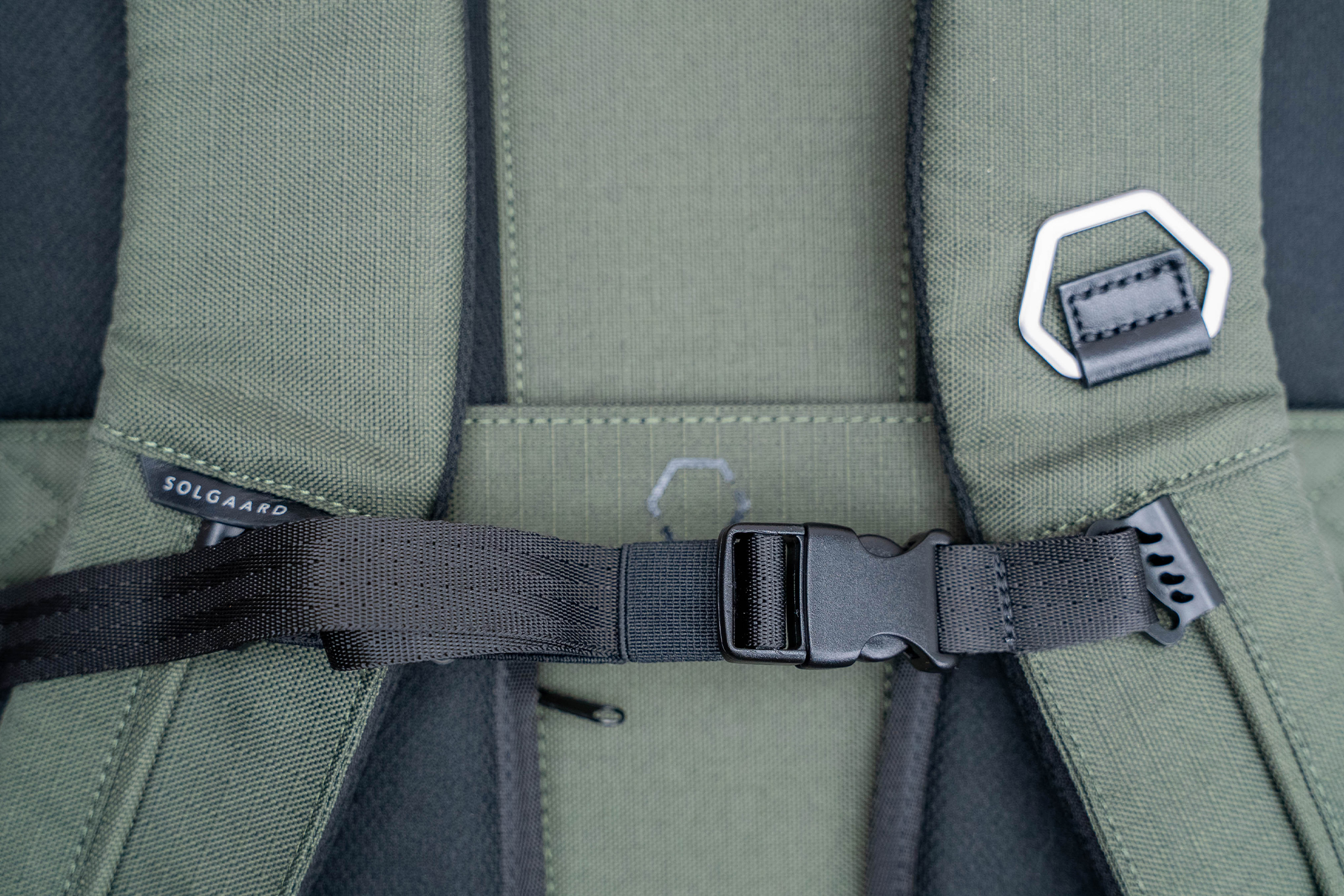
Built into each shoulder strap is a zippered pocket where you can store transit cards or a bit of cash for quick and easy access. If that’s not enough, there’s also a D-ring on the right shoulder strap where you can hang an accessory pouch or wallet. And if even that’s still not enough, two passport-sized zippered pockets are built into the back panel. Their zippered openings are just below the luggage pass-through, facing toward the central air channel.
Fit Notes
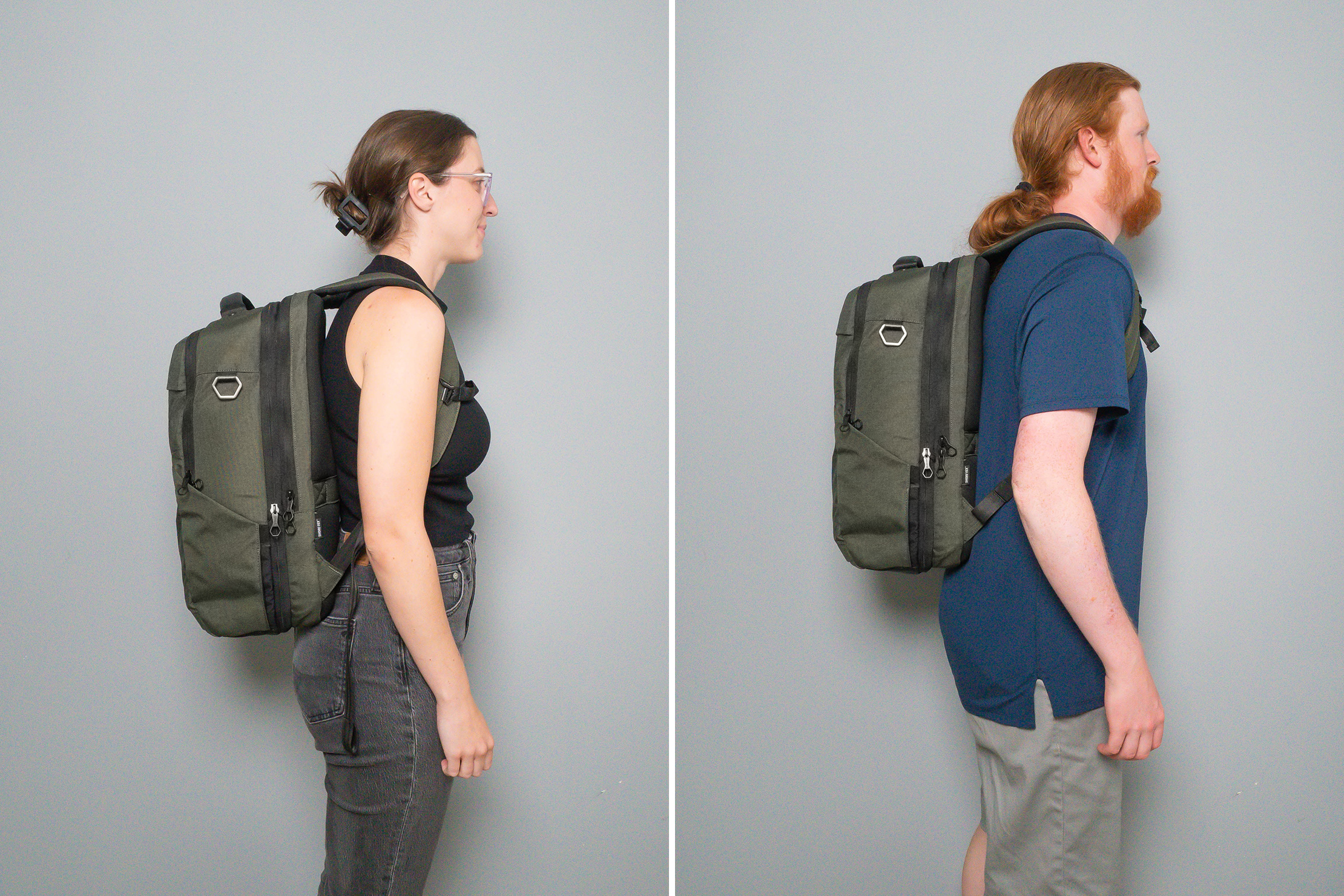
The first thing you notice about the Lifepack Endeavor once you carry it is its heft. Even when empty, this 27-liter backpack weighs 4.8 lbs, which is just a tad bit more than the 35-liter Aer Travel Pack 3’s 4.45 lbs. To be fair, the Lifepack Endeavor also expands up to 35 liters, but the point stands: it’s a hefty unit. This may at least partially explain the choice of a lightweight (although sturdy) ripstop-like fabric.
Size is also a factor, as those with small torsos among the Pack Hacker crew feel the back panel beyond the lower back and right up to the tailbone, which is not ideal. Needless to say, we find this 27-liter backpack is much better for those with bigger frames.
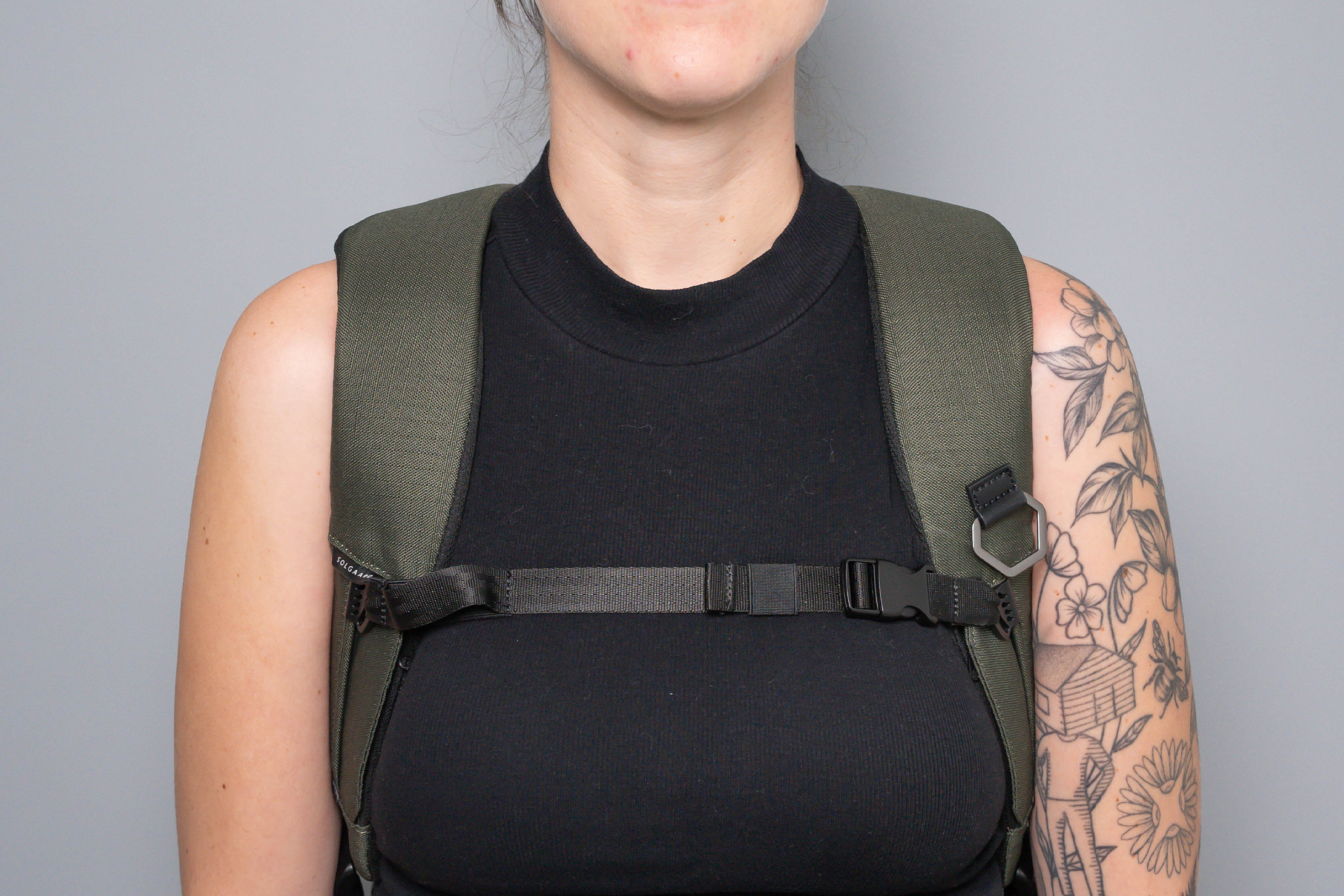
As for carrying comfort, it’s still acceptable, though it’s definitely not ideal for the aforementioned reasons, i.e., strap padding, bag size, and general heftiness. The observant among you may have also noticed the short height adjustment for the sternum strap, which is unfortunate. Though we like sliding sternum straps, we wish this one could be adjusted higher.
Inside The Backpack
The Lifepack Endeavor has a front pocket, though we don’t find ourselves using it much, if at all. Its opening is hidden by a fabric welt near the top, and the interior goes very deep. Despite the vertical depth, though, there’s just not a ton of horizontal depth, so even fairly large items like an iPhone 13 just sink straight to the bottom, where they’re hard to reach. To put it another way, it’s a pocket that’s mostly ideal for large, flat items like an iPad Pro, a travel keyboard, or very flat organizers and pouches.
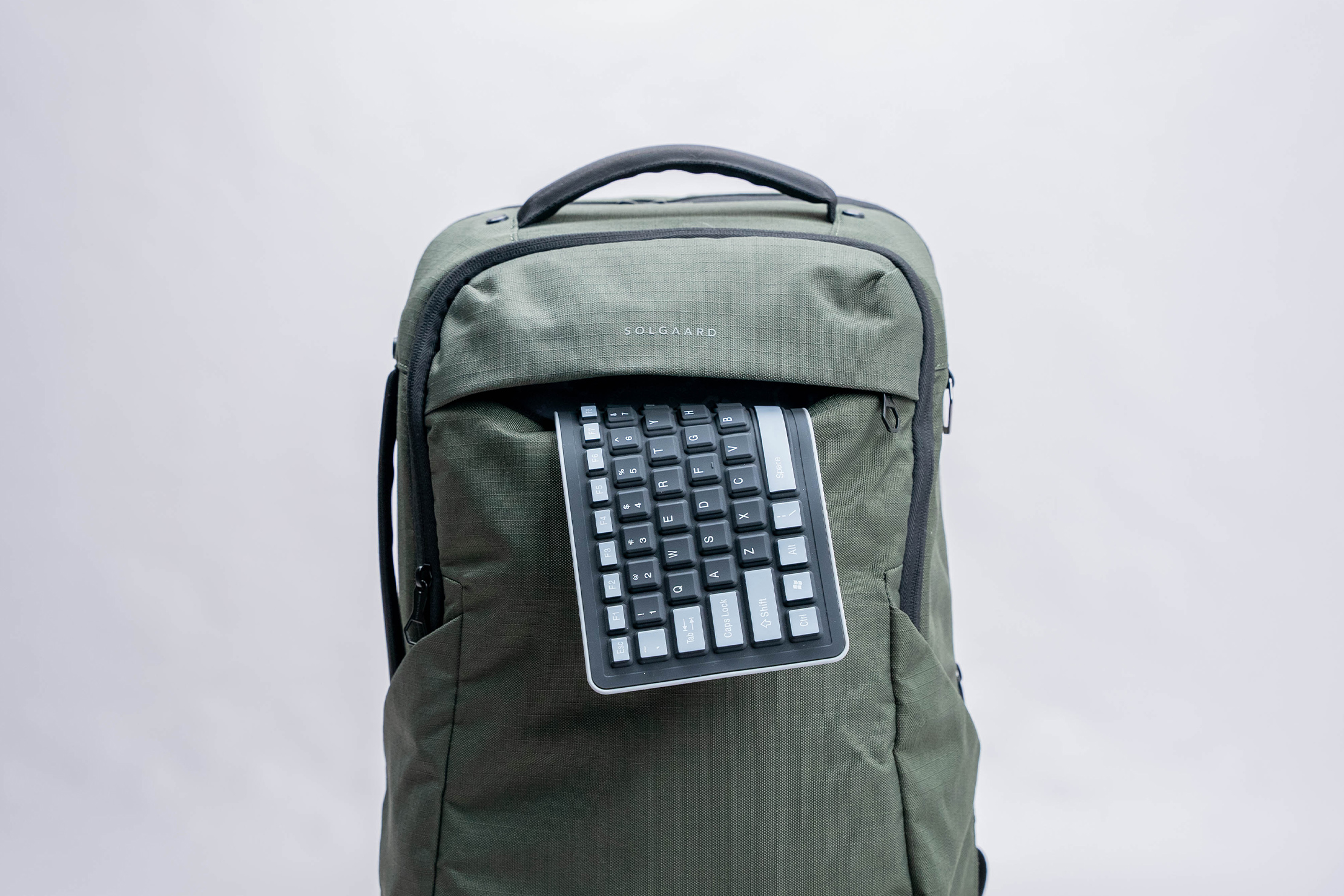
There’s also an adjacent zippered pocket, but this one opens from the bottom. Unfortunately, its position limits its functionality, making it viable only as a storage spot for a rainfly. Driving home the point are two attachment loops inside where you can hang a rainfly or other accessories you may want to store anchored inside.
Next up is the laptop compartment. Towards the back area is a 16-inch laptop sleeve, padded and soft-lined for your device’s protection. Adjacent to it is a see-through pocket for small documents. Right across is a mesh pocket with three pen slots, two elastic loops, and three liner pockets above. Solgaard says one of those liner pockets is a protected glasses pocket, but, as far as we can tell, none of them feature any padding or soft fabric.
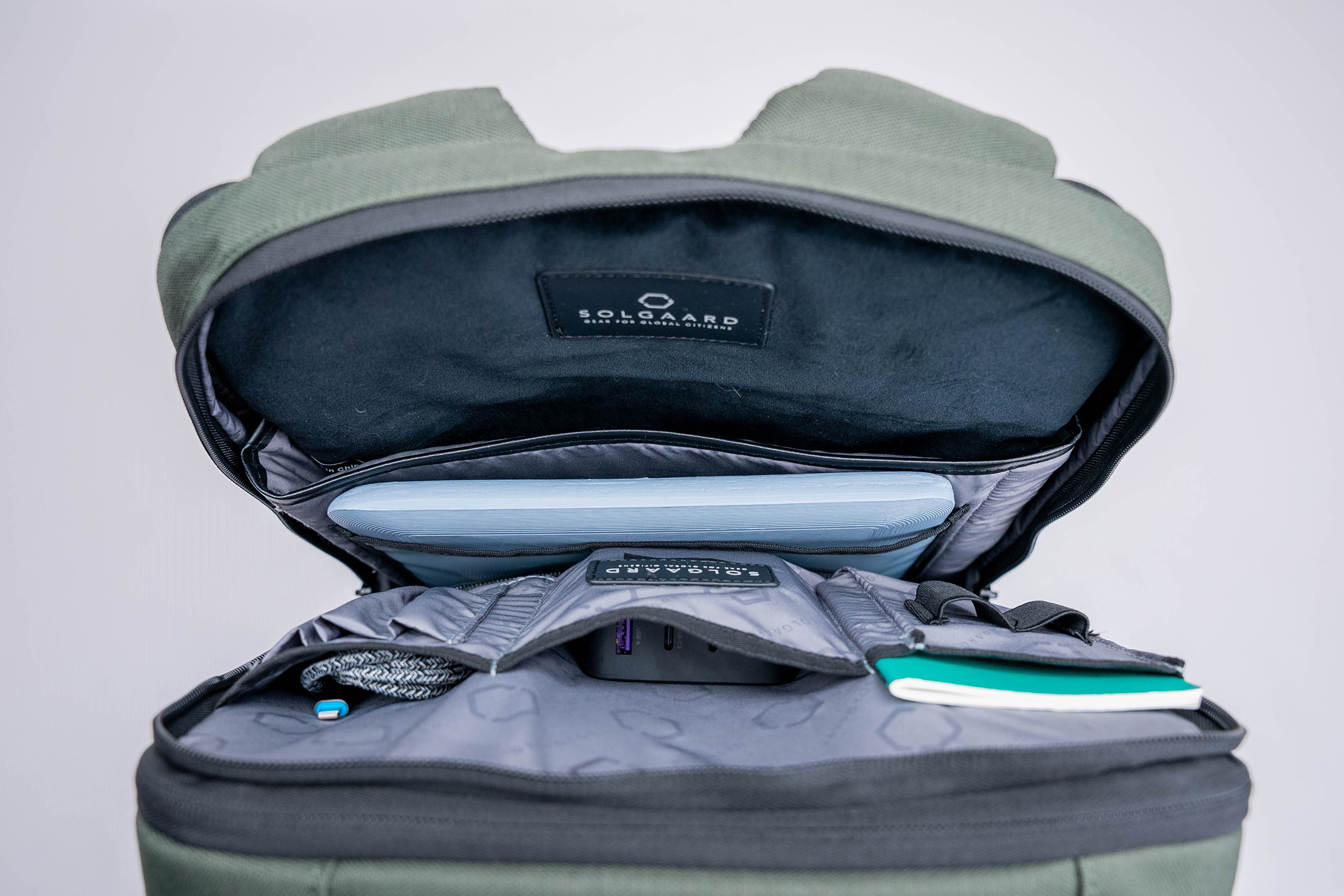
Despite being a travel backpack, the Lifepack Endeavor opens horseshoe-style, much more like a daypack. This feels a bit limiting for packing since it’s a smaller opening instead of a folded-out clamshell. That said, it isn’t entirely illogical here since the Lifepack Endeavor features a closet system.
The closet system is a somewhat elaborate clothing organizer that packs into the Lifepack Endeavor. You can think of it as a glorified packing cube. Instead of having multiple packing cubes (like we usually travel with), you only have this to work with. Unfortunately, even with a more “simplified” one-packing-cube-to-rule-them-all approach, it’s still hard to stuff it into the limited opening. In fact, it might be easier to just have individual packing cubes instead. That way, we can arrange them however we want, independent of each other. Before completely dismissing the closet, though, let’s take a closer look.
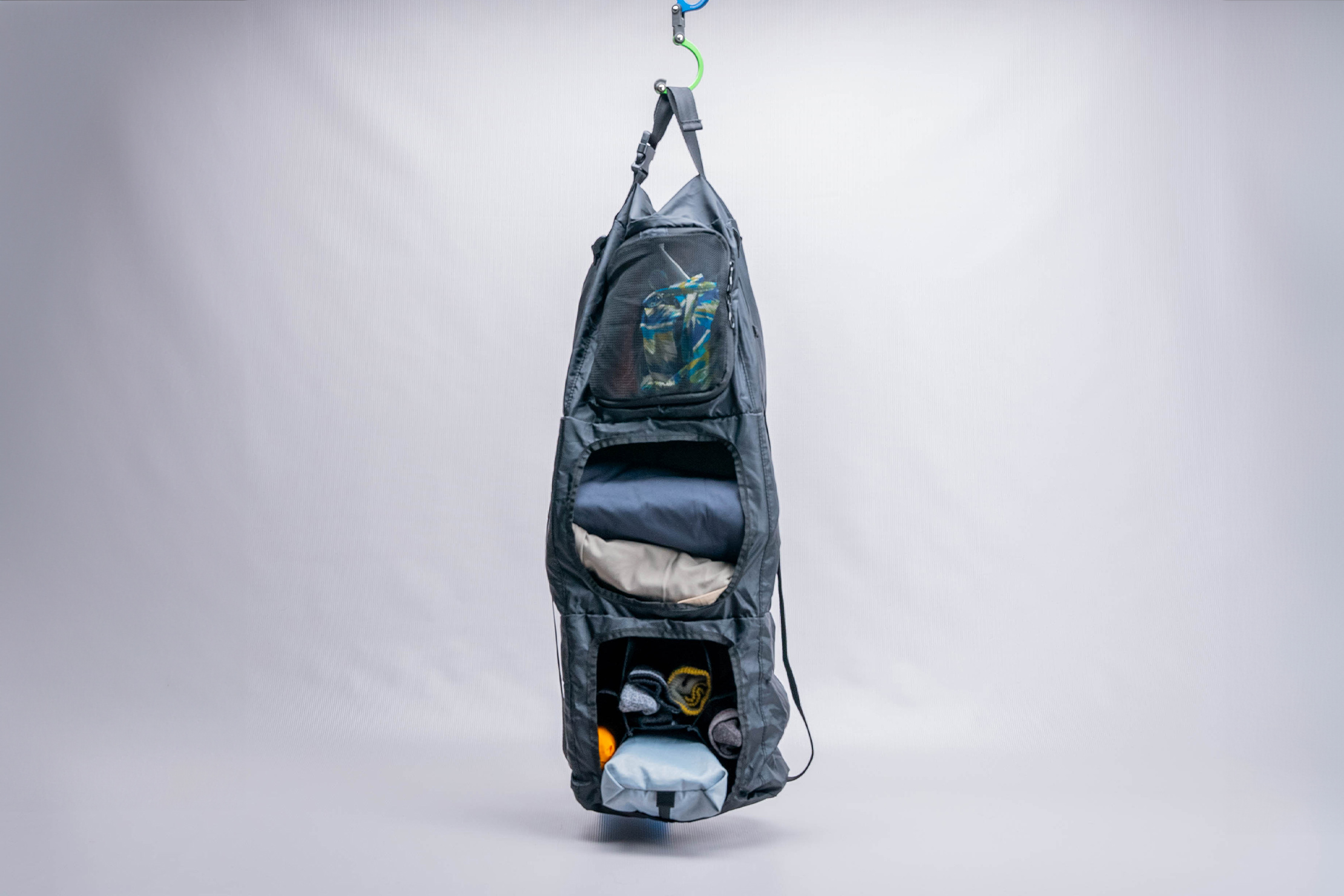
The closet module itself has three sections, with the top meant to house rolled-up shirts, the middle section accommodating thick clothing like pants, and the bottom section containing underwear and smaller garments. Straps at the sides compress it into a small package you can fit inside the Lifepack Endeavor. To be fair, it does work, but it’s very clunky.
Cinching the compression straps results in a hamburger effect where the stuff in the middle bends in or out. Now imagine trying to slip it neatly into a limited opening. To be fair, you can expand the Lifepack Endeavor by undoing a zipper that goes around the entire bag, allowing it to extend its horizontal depth like an accordion. While this makes it easier to fit the closet, we found the entire process a bit inefficient.
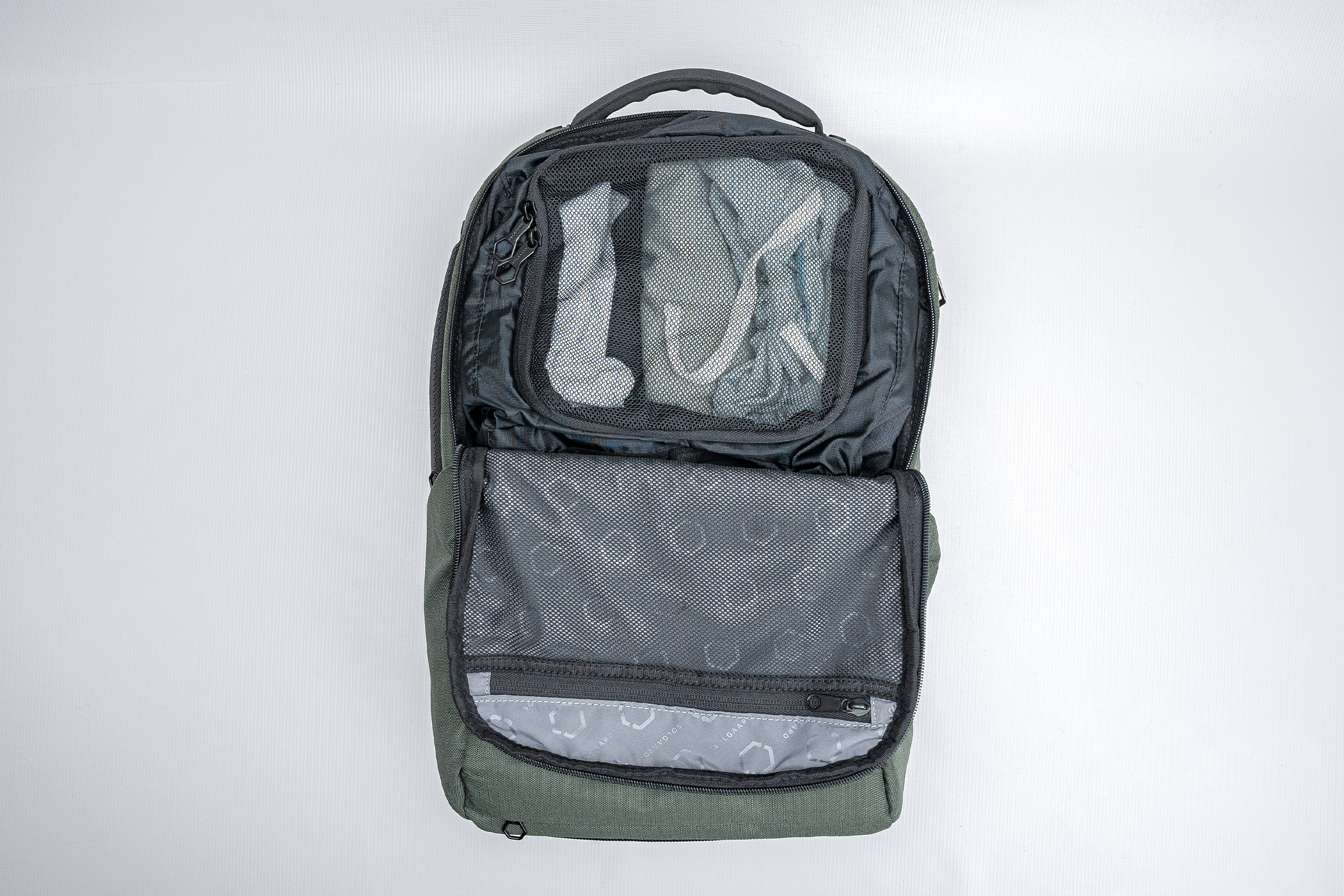
To summarize, we packed clothing into the closet, compressed it, decompressed the bag to easily insert the closet, and then compressed the bag again so as not to compromise the overall structure and further degrade carrying comfort. Now, imagine having to do that all over again before you leave your hotel room at the end of a trip.
The Lifepack Endeavor’s main compartment has its own set of pockets for organizing small gear. There’s a sizable zippered mesh pocket on the front side where we store extra toiletries. Just below it is a zippered pocket, though this one is split into two halves. On the right side is another see-through pocket for something like a passport, and on the left is a sunglasses pocket, three pen slots, and a key leash.
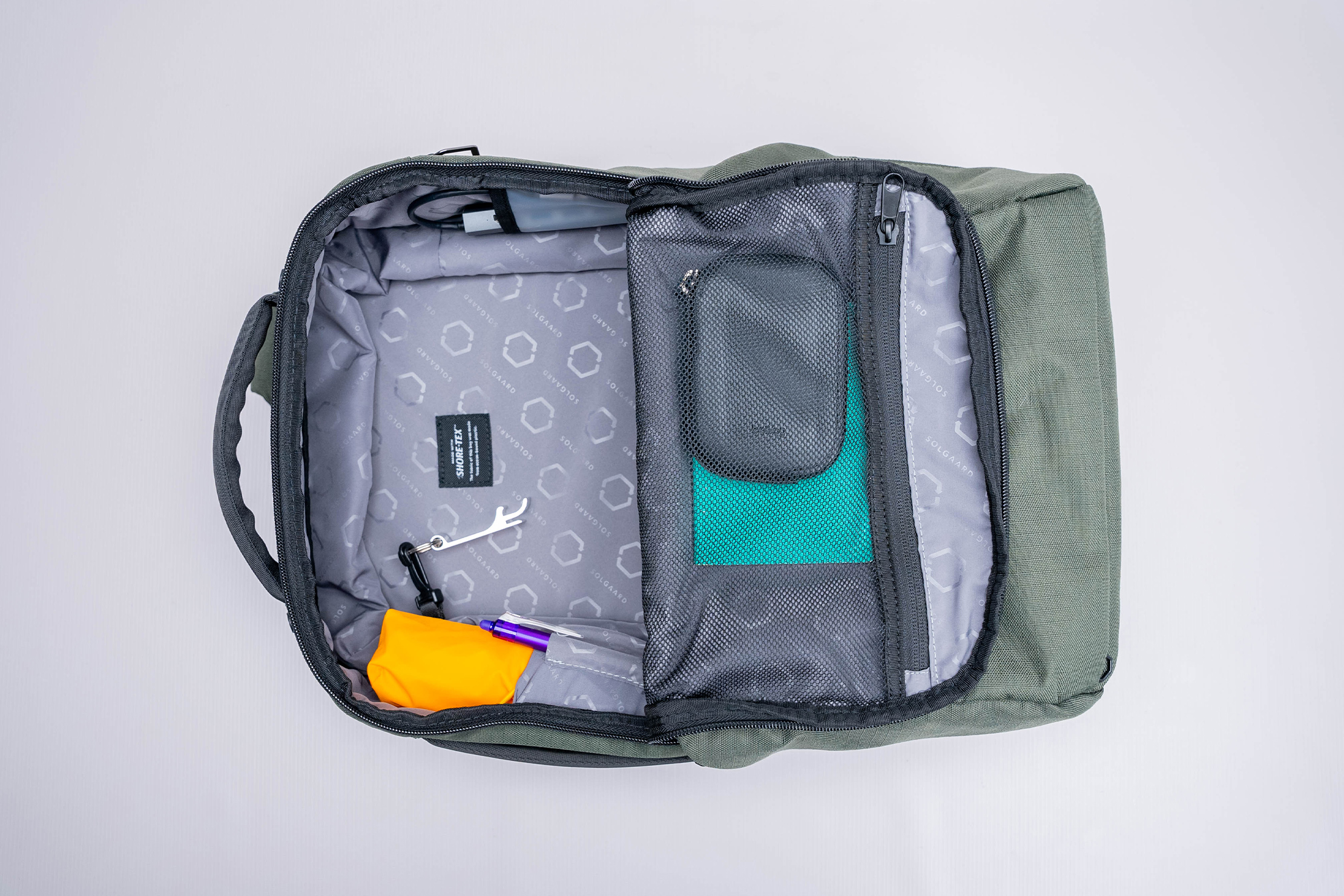
The level of organization inside is nice to see, but we just can’t shake the Solgaard Lifepack Endeavor’s overall clunkiness. It’s a sort of upsized daypack, with its horseshoe-style opening and simple harness system, that is also big enough to fit a closet system. While the idea’s not without merit, we think the concept works better with a more polished design like Tropicfeel’s.
Usage Timeline
Condition: Excellent
- Digging the structured design
- Seems to be a pretty roomy interior
- Materials feel durable
Condition: Excellent
- Roomy main compartment even without the expansion
- Expansion system can sag a bit unless the bag is completely full
- Closet system takes up a fair amount of space in the bag—individual packing cubes help utilize the space a bit more
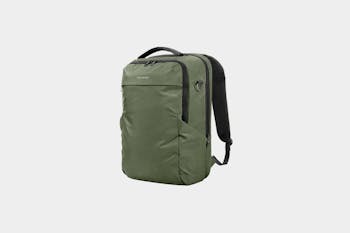






Get your questions about the Solgaard Lifepack Endeavor (with closet) answered from our team and the Pro Community right here on the page. Plus, join discussions with other members about gear, guides, and more.
Join Pack Hacker Pro or, Sign In